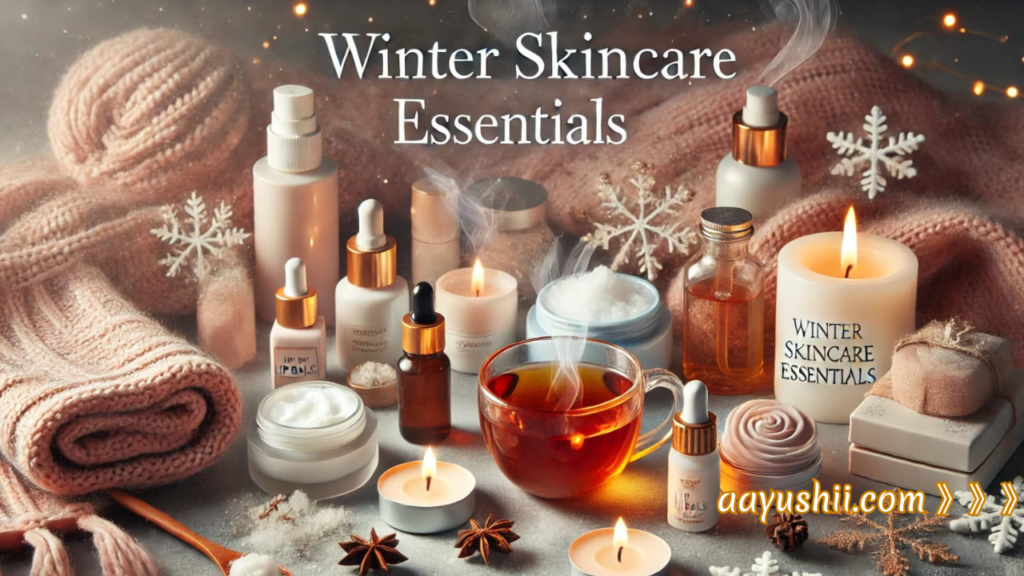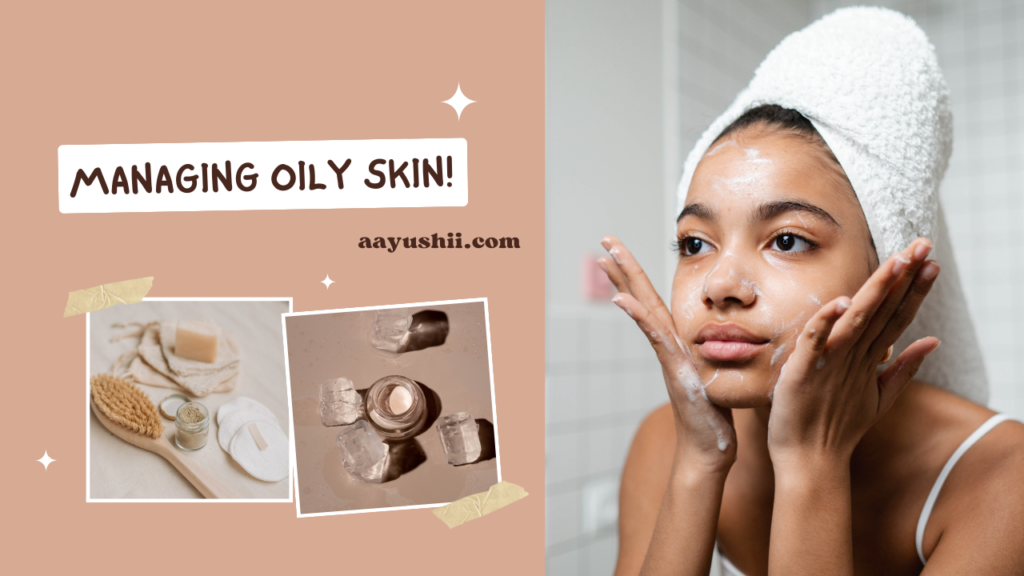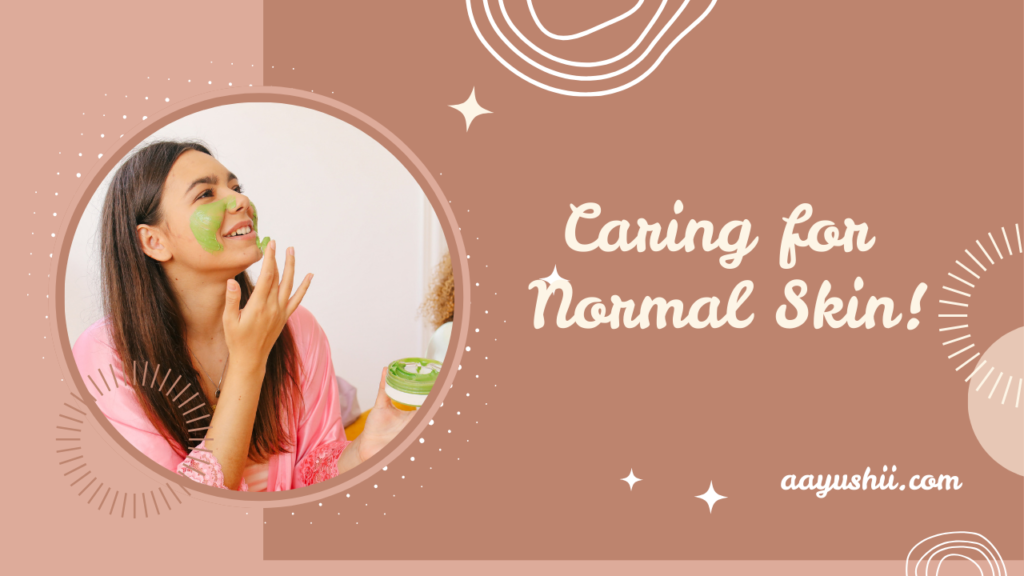As the colder months set in, our skin often struggles to adapt. The combination of chilly winds, plummeting temperatures, and indoor heating can leave our complexion feeling dry, flaky, and irritated. Winter is notoriously tough on the skin, as low humidity levels and constant shifts between the cold outdoors and heated indoors strip away its natural moisture. If you’ve ever dealt with winter-induced dryness or redness, you know how uncomfortable—even painful—it can be.
This in-depth guide covers everything you need to know about winter skincare essentials. From understanding the science behind skin dryness to discovering effective ways to reduce redness, each section offers detailed insights to help you maintain a nourished, comfortable complexion. Whether you experience mild tightness or more severe cracking and irritation, these expert tips will equip you with the knowledge to protect and care for your skin throughout the season.
1. Understanding Winter Dryness and Redness

As winter sweeps in, it often brings dry, rough, and flaky skin, leaving many struggling to maintain a smooth, hydrated complexion. Along with dryness, redness and irritation often follow, making the skin more sensitive and prone to discomfort. If not properly managed, these issues can escalate, leading to itching, cracking, and even worsening conditions like eczema or rosacea. But why does this happen? Let’s break it down.
Why Does Winter Cause Skin Dryness and Redness?
Several factors contribute to winter skin struggles, from environmental changes to how our skin reacts to colder temperatures. Here’s what happens:
Lower Humidity Levels: Cold air naturally holds less moisture than warm air, leading to drier skin. As temperatures drop, the air draws moisture away from your skin, leaving it dehydrated.
Indoor Heating Dries Out the Air: Central heating, space heaters, and fireplaces might keep us warm, but they also reduce indoor humidity. This lack of moisture in the air further dehydrates the skin, leading to flakiness and irritation.
Weakened Skin Barrier: The skin barrier (the outermost protective layer) helps retain moisture and shield against environmental stressors. However, frequent shifts between cold outdoor air and warm indoor heating weaken this barrier, making it harder for the skin to stay hydrated.
Increased Sensitivity and Redness: Dry skin is more prone to irritation. As the skin loses its natural oils, it becomes sensitive and reactive, often leading to redness, inflammation, and discomfort. Those with pre-existing conditions like eczema or rosacea may notice their symptoms worsening in winter.
Why Understanding This Matters
Recognizing these causes allows you to take targeted action to protect your skin. By adjusting your skincare routine, using the right products, and even making small changes to your environment (like adding a humidifier), you can prevent winter dryness and redness before they become a serious problem.
Now that you understand why your skin reacts this way in winter, let’s explore the best ways to keep it hydrated, healthy, and comfortable all season long.
2. Why Skin Becomes Drier in Winter: The Science Explained
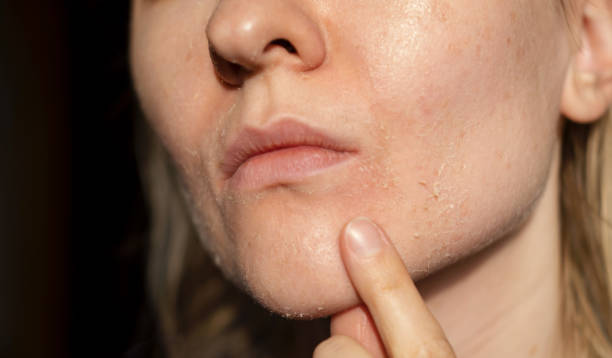
During the winter, the atmosphere’s capacity to hold water vapor diminishes. This means the air around us turns not only cold but also arid. Our skin normally relies on the environment for moisture exchange—both absorbing moisture from the air (to a minimal extent) and releasing sweat or oils. When the air is dry, there’s a gradient that pulls moisture away from our skin.
Moreover, in cold weather, the natural lipid barrier (a protective layer composed of oils and fats that seal in hydration) can weaken. The result is an environment where moisture escapes from the skin’s surface more quickly than it can be replaced.
Factors Influencing This Moisture Loss:
- Wind Chill: Winter winds, especially in colder climates, intensify the drying effect by accelerating the evaporation of water from the skin’s surface.
- Hot Showers or Baths: Seeking warmth in a steamy shower might feel soothing, but hot water strips your skin of its natural oils, exacerbating dryness.
- Frequent Hand Washing: A necessity for hygiene, but using harsh soaps and very hot water can further dehydrate the skin, especially on the hands.
- Genetics: Some individuals are genetically predisposed to drier skin types, making them more susceptible to winter dryness.
- Age: As we get older, our skin’s ability to retain moisture diminishes due to decreased sebum production and thinner epidermis.
3. Common Causes of Winter Redness
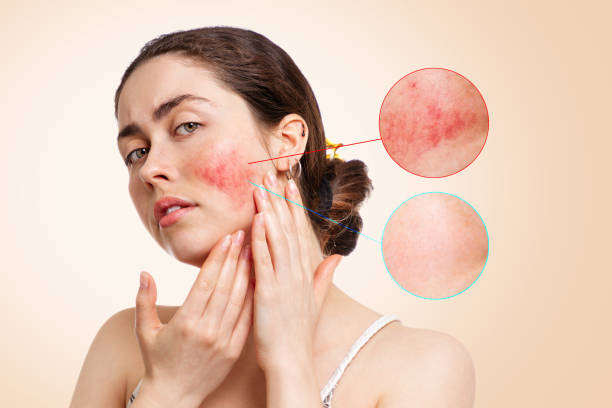
While dryness is a broad issue affecting many people, redness can be more specific. It often indicates skin irritation or inflammation, conditions that can be triggered and worsened by the winter climate.
Possible Triggers for Winter Redness Include:
- Rosacea flare-ups: Winter weather can trigger flare-ups in individuals prone to rosacea, manifesting as persistent facial redness, visible blood vessels, and bumps.
- Windburn: Constant exposure to strong winds can cause a red, raw sensation on exposed skin, commonly on cheeks and nose.
- Over-exfoliation or harsh products: When skin is already compromised by dryness, using aggressive scrubs or strong acids without proper moisturization can lead to redness and irritation.
- Temperature fluctuations: Moving from cold outdoor temperatures to heated indoor environments repeatedly can shock the capillaries in your skin, leading to visible redness.
Real-Life Example: Imagine walking outside on a bitterly cold day. Your cheeks quickly turn rosy from the chill, but then you step into your heated office. The sudden change in temperature causes blood vessels to expand and contract rapidly, sometimes leaving the skin red and inflamed. If you have a weakened skin barrier from dryness, this redness can linger and even worsen.
4. The Importance of Maintaining Your Skin Barrier
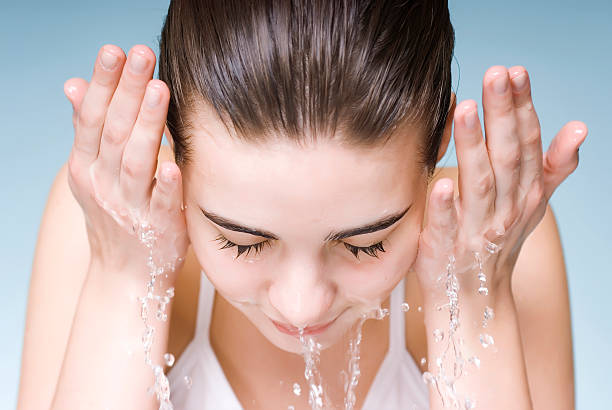
Your skin barrier, also called the stratum corneum, is the outermost layer of your skin. Think of it as a protective shield composed of lipids, ceramides, and other natural oils. Its job is to keep irritants out and lock moisture in. During winter, this barrier is particularly vulnerable.
When the skin barrier is compromised:
- You lose water more rapidly (known as transepidermal water loss or TEWL).
- Skin becomes more reactive, showing increased redness and sensitivity.
- Minor issues like dryness can escalate into cracking, scaling, or burning sensations.
Steps to Protect the Skin Barrier in Winter:
- Choose Barrier-Friendly Products: Opt for cleansers and moisturizers containing ceramides, fatty acids, and cholesterol, which help rebuild the lipid matrix.
- Use Lukewarm Water: Hot water strips oils from the skin; lukewarm water is gentler and less likely to dry out your skin.
- Pat, Don’t Rub: After cleansing or showering, pat your skin dry to avoid mechanical irritation.
- Follow the 3-Minute Rule: Apply moisturizer within 3 minutes of cleansing or bathing. This helps seal in residual moisture and fortify the barrier.
5. Core Components of a Winter Skincare Routine
While everyone’s skin is unique, there are fundamental steps that most people should consider including in a winter skincare routine. The goal is to cleanse gently, restore moisture, protect the skin barrier, and address specific concerns like redness or flakiness.
5.1 Gentle Cleansing
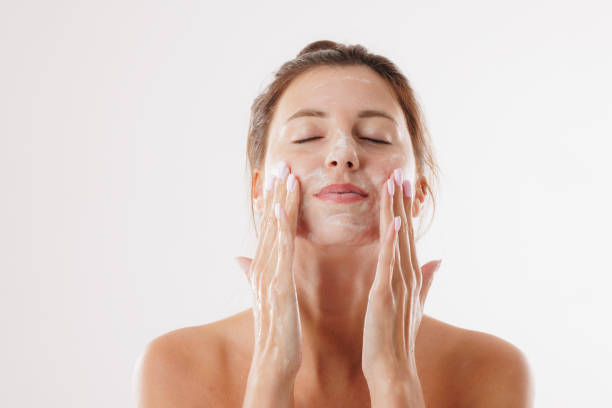
Why Gentle Cleansing Is Critical in Winter:
Winter skin already struggles with dryness. Using a harsh cleanser can strip away natural oils and exacerbate dryness. Opt for products formulated with moisturizing agents like ceramides, glycerin, or hyaluronic acid.
Key Tips for Gentle Cleansing:
- Avoid Sulfates: Sulfates (like SLS) can be too drying. Look for “soap-free,” “pH-balanced,” or “non-foaming” cleansers.
- No Over-Cleansing: Limit face washing to twice a day at most. If your skin is extremely dry, once a day (especially at night) might be enough—simply rinse with water in the morning.
- Massage, Don’t Scrub: Gently massage the cleanser onto your skin for about 30-60 seconds. Avoid using rough washcloths or brushes on very dry, irritated areas.
Example Product Types:
- Cream cleansers (for dry to normal skin)
- Oil-based or balm cleansers (excellent for very dry or sensitive skin)
- Low-pH gentle gel cleansers (for those who prefer a lightweight feel)
5.2 Effective Exfoliation
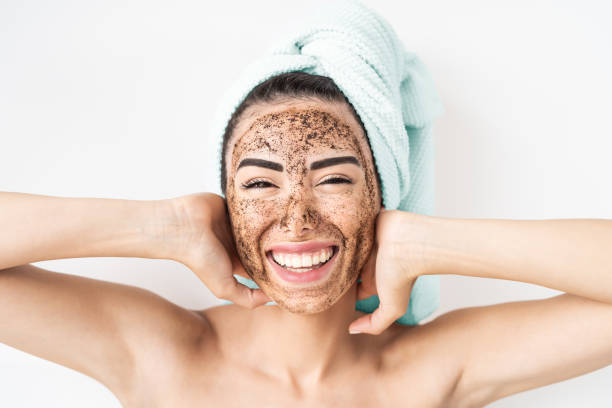
Purpose of Exfoliation in Winter:
Exfoliation removes the dead skin cells that accumulate on the surface, which can otherwise lead to a dull complexion and reduce the effectiveness of moisturizers. However, winter skin is more sensitive, so moderation is key.
Types of Exfoliants:
- Physical Scrubs: Typically contain small granules or beads. While they can be effective, they may be harsh on sensitive or very dry skin.
- Chemical Exfoliants: Alpha-hydroxy acids (AHAs) like lactic acid or glycolic acid, and beta-hydroxy acids (BHAs) like salicylic acid, dissolve dead skin cells without the need for manual scrubbing.
- Enzyme Exfoliants: Derived from fruits like papaya or pineapple, these gently slough off dead cells and are often more suitable for sensitive or redness-prone skin.
Recommended Frequency:
- 1-2 times a week for chemical or enzyme exfoliants in winter to prevent over-stripping the skin.
- If using a physical scrub, opt for very gentle formulas and limit to once a week or less.
5.3 Hydrating Toners and Essences
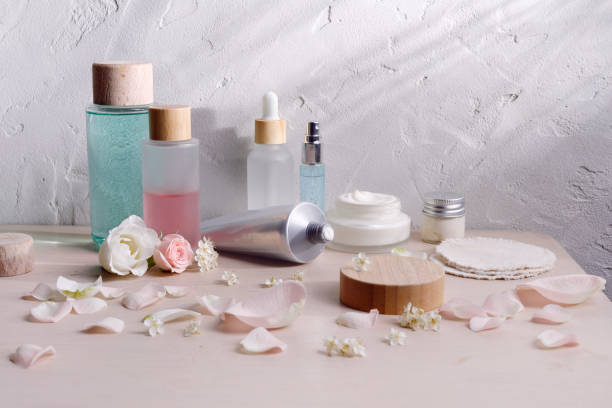
Why Toners and Essences Matter:
In Asian skincare routines, toners (also called “skins” or “softeners”) and essences help prep the skin for better absorption of subsequent products. They often contain humectants like glycerin or hyaluronic acid that bind water to the skin.
How to Use:
- After cleansing, apply a hydrating toner to a cotton pad or directly into your palms. Pat gently onto your face.
- If you’re using an essence, tap a small amount onto your skin immediately after toning.
Benefits:
- Provides an extra layer of hydration, which is critical in winter.
- Balances the skin’s pH after cleansing, potentially aiding the skin barrier.
- Helps serums, moisturizers, and other treatments absorb more efficiently.
5.4 Serums for Deep Hydration
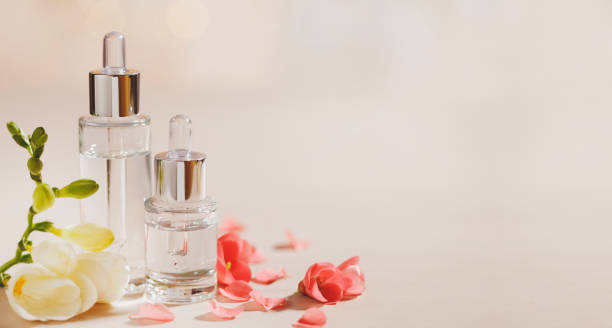
Role of Serums:
Serums are concentrated formulas designed to deliver high levels of active ingredients into the deeper layers of the skin. In winter, hydration-focused serums can be especially beneficial.
Key Ingredients to Look For:
- Hyaluronic Acid (HA): A humectant capable of holding up to 1,000 times its weight in water.
- Niacinamide: Known for supporting the skin barrier and reducing redness.
- Peptides: Assist in repairing and strengthening the skin, improving overall texture and resilience.
- Ceramides: Essential fats that help rebuild and maintain the protective barrier.
Application Tips:
- Apply on slightly damp skin to help lock in moisture.
- Follow with moisturizer to seal in the serum.
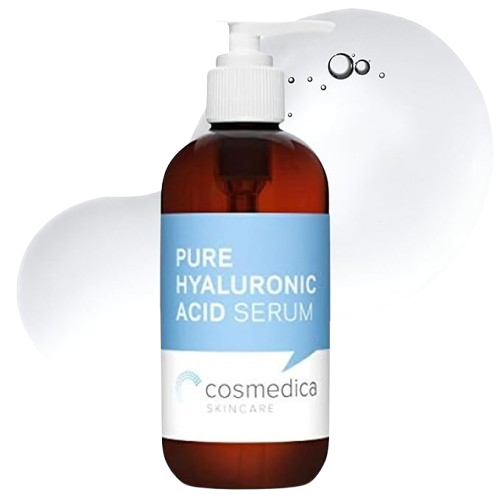
5.5 Moisturizing: Creams, Lotions, and Ointments
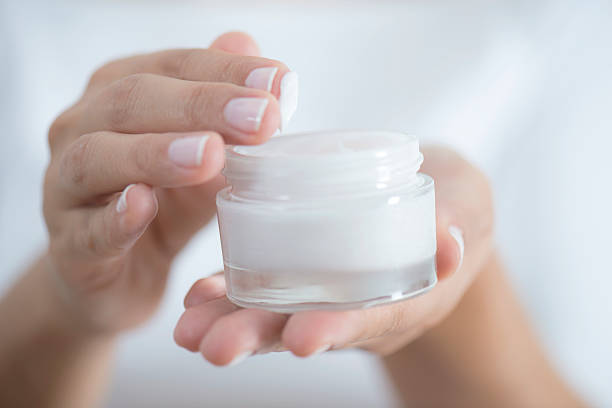
Why Moisturizing Is the Cornerstone of Winter Skincare:
Moisturizers prevent trans-epidermal water loss and replenish the lipids in your skin barrier. They also create a protective layer that shields against environmental stressors.
Types of Moisturizers:
- Lotions: Generally lighter and contain more water. They may not be sufficient for very dry or cracked skin in winter.
- Creams: Thicker consistency with a balance of water and oils, ideal for moderate dryness.
- Ointments/Balms: Heaviest option, often petrolatum or wax-based. These are very effective for severely dry or cracked areas.
Tips for Maximum Effectiveness:
- Apply moisturizers right after cleansing to trap residual water on the skin.
- Consider a heavier nighttime moisturizer or overnight mask to allow extended repair while you sleep.
- Focus on areas prone to dryness: cheeks, around the mouth, lips, hands, elbows, and knees.
5.6 Facial Oils and Their Benefits
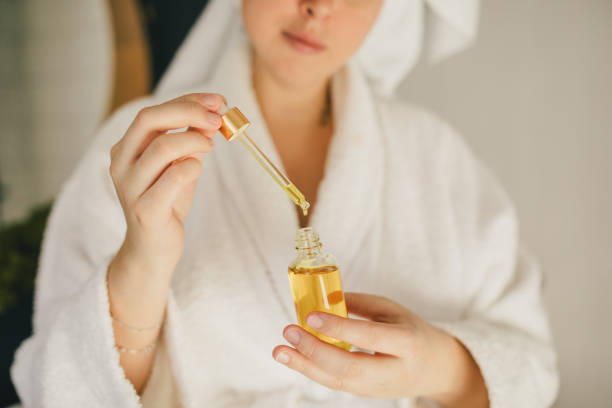
Purpose of Facial Oils:
Facial oils offer an additional occlusive layer that seals in moisture. They can be used alone or mixed into your moisturizer.
Popular Oils for Winter Skincare:
- Rosehip Oil: High in antioxidants and essential fatty acids, beneficial for brightening and nourishing dry skin.
- Argan Oil: Lightweight yet deeply moisturizing, good for sensitive or redness-prone skin.
- Squalane: Mimics the skin’s natural sebum and is known for being non-comedogenic and gentle.
- Jojoba Oil: Closely resembles the skin’s natural oils and helps regulate excess sebum production.
How to Incorporate:
- After applying serum and moisturizer, warm a few drops of facial oil in your palms. Gently press it onto your face.
- For very dry conditions, mix a drop or two into your moisturizer for an extra boost.
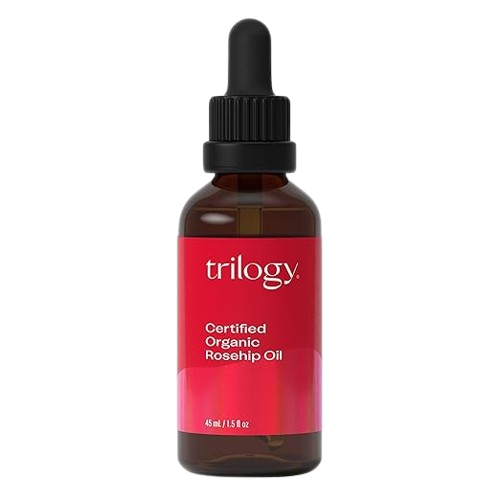
5.7 Targeting Redness and Irritation
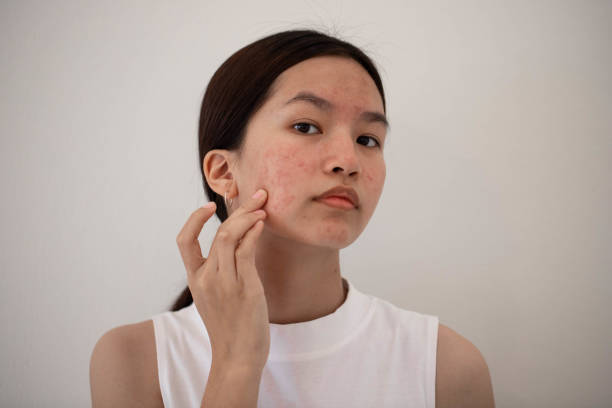
Choosing Products for Redness-Prone Skin:
If redness or sensitivity is a primary concern, look for calming ingredients like chamomile, green tea extract, centella asiatica (also known as gotu kola or cica), aloe vera, and colloidal oatmeal. These have anti-inflammatory properties that can soothe irritated or red skin.
Specific Strategies to Reduce Redness:
- Avoid Over-Exfoliation: Overuse of scrubs or strong chemical peels can worsen redness.
- Layer Lightweight, Calming Products: After cleansing, apply products with soothing botanicals to reduce inflammation.
- Spot Treat Problem Areas: Some people experience redness primarily around the nose or cheeks. In those cases, consider a targeted cream or serum for localized relief.
5.8 Sun Protection in Winter
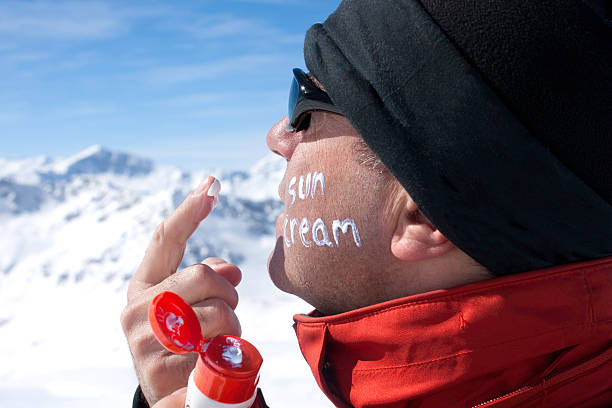
A common misconception is that sunscreen is only necessary during summer. The reality is UV rays are present year-round. Snow can also reflect UV rays, amplifying their effect.
Importance of SPF in Winter:
- Prevents Further Skin Damage: Even minimal sun exposure can break down collagen, leading to a weaker skin barrier.
- Reduces Redness and Inflammation: UV exposure can aggravate redness-prone conditions like rosacea or eczema.
- Maintains an Even Skin Tone: Consistent sun protection helps reduce hyperpigmentation and uneven tones that become more noticeable on dry, flaky skin.
How to Choose the Right Winter Sunscreen:
- SPF 30 or Higher: Offers adequate protection from UVA and UVB rays.
- Moisturizing Formulas: Look for sunscreens that double as moisturizers, especially if you have dry skin.
- Physical (Mineral) Sunscreen: Titanium dioxide or zinc oxide can be gentler on redness-prone skin.
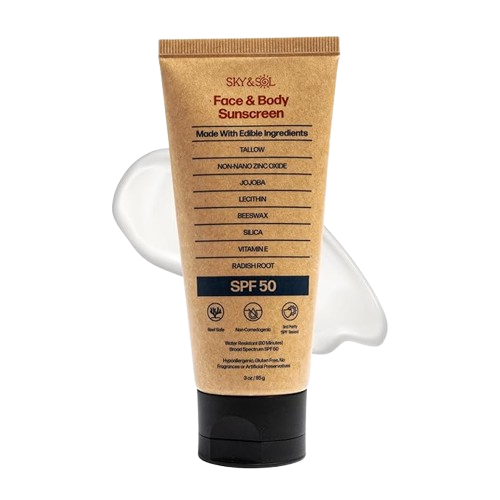
6. Essential Skincare Ingredients for Winter
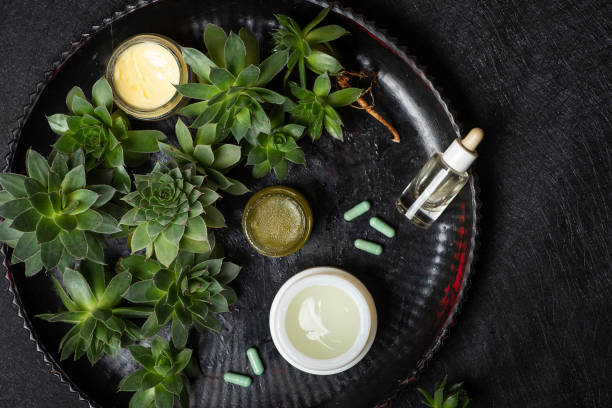
The right ingredients can make a world of difference in soothing dryness and combating redness. Below is a list of noteworthy ingredients often used in winter skincare formulas:
- Ceramides: Replenish the lipid layer, essential for barrier repair.
- Hyaluronic Acid: Locks moisture into the skin, preventing dehydration.
- Glycerin: A cost-effective humectant that draws water into the outer layer of the skin.
- Shea Butter: Provides rich, nourishing moisture and helps soothe irritation.
- Colloidal Oatmeal: Known for its anti-inflammatory properties, great for reducing redness and itching.
- Niacinamide (Vitamin B3): Multi-tasking ingredient that helps reduce redness, improves skin texture, and supports barrier function.
- Vitamin E: An antioxidant that aids in repairing and protecting the skin from environmental damage.
- Aloe Vera: Cooling and soothing, particularly beneficial for inflamed or red patches.
- Chamomile Extract: Offers calming effects for sensitive or irritated skin.
7. Advanced Treatments and Masks

Why Consider Advanced Treatments?
Sometimes, standard cleansing, toning, and moisturizing might not be enough if you’re dealing with persistent dryness or pronounced redness. Incorporating specialized treatments can help.
Hydrating Masks
- Sheet Masks: Soaked in essence or serum, these can deliver concentrated doses of hydration directly to the skin’s surface.
- Sleeping Masks (Overnight Masks): Applied as the final step in your nighttime routine, forming a barrier that locks in active ingredients while you sleep.
- Cream Masks: Thicker textures aimed at replenishing moisture. Some can be rinsed off, while others are formulated to be left on for maximum benefit.
LED Light Therapy
- Red Light: Known to boost collagen production and improve skin healing. It can also reduce inflammation, making it helpful for redness.
- Blue Light: More commonly used for acne, but can also help reduce certain types of inflammation.
Microcurrent Facial Devices
- Use low-level electrical currents to stimulate facial muscles and promote better product absorption. While these devices are more often touted for anti-aging benefits, improved circulation may indirectly help with redness by increasing oxygen flow and supporting barrier health.
Professional In-Office Treatments
- HydraFacial: A multi-step treatment that cleanses, exfoliates, and hydrates. Particularly beneficial for dry, dehydrated skin.
- Chemical Peels: A mild peel with lactic or mandelic acid can remove dead skin cells and encourage new cell growth, but it should be approached cautiously in winter.
- Lasers or Intense Pulsed Light (IPL): Often used to target redness, broken capillaries, or rosacea flare-ups.
Important Note: Always consult with a licensed skincare professional or dermatologist before undergoing advanced procedures, especially if you have sensitive, redness-prone, or inflamed skin.
8. Lifestyle Factors and Their Impact on Winter Skin

Skincare products are just one part of the puzzle. How you live day-to-day—your environment, habits, and even clothing choices—can significantly impact your skin’s condition during winter.
Humidity Control:
Indoor heating systems rob the air of moisture, contributing to dryness. A humidifier in your bedroom or home office can help maintain a more skin-friendly environment. Aim for a humidity level of around 40-50%.
Warm, Not Hot Showers:
While it’s tempting to soak in a hot bath to escape the cold, prolonged contact with hot water strips natural oils from your skin. Lukewarm water is gentler, and limiting showers to 5-10 minutes is ideal.
Clothing Choices:
- Soft Fabrics: Choose materials like cotton or silk closest to your skin. Wool can be warm but may irritate sensitive or dry skin if worn directly against it.
- Layering: Helps regulate your body temperature so that you don’t overheat or sweat excessively, which can aggravate dryness or itching when you step back into the cold.
Hydration Habits:
Dehydration can manifest as dull, tight skin. Even though you may not feel as thirsty in winter as you do in summer, continue drinking adequate water throughout the day. Warm drinks like herbal teas can be a comforting way to stay hydrated.
Sleep and Stress Management:
Chronic stress elevates cortisol levels, potentially leading to flare-ups of redness or dryness. Aim for 7-9 hours of quality sleep, and consider relaxation techniques—such as meditation, yoga, or breathing exercises—to maintain a balanced body and mind.
9. Dietary Considerations for Healthy Winter Skin

“You are what you eat” might be an oversimplification, but diet plays a significant role in your skin’s health. Certain foods can help fortify your skin barrier from the inside out.
Nutrients to Focus On:
- Omega-3 Fatty Acids: Found in fatty fish (salmon, sardines), flaxseeds, and walnuts. These help maintain skin elasticity and moisture.
- Antioxidant-Rich Foods: Berries, leafy greens, and nuts can help combat oxidative stress, which worsens dryness and redness.
- Vitamin C: Crucial for collagen synthesis and antioxidant protection. Good sources include citrus fruits, bell peppers, and broccoli.
- Vitamin E: Protects cell membranes from oxidative damage. Sunflower seeds, almonds, and spinach are excellent sources.
- Beta-Carotene and Vitamin A: Sweet potatoes, carrots, and squash can help maintain healthy skin cells and reduce flaking.
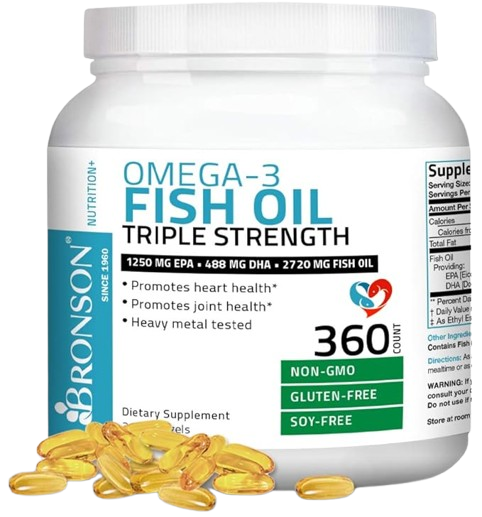
Hydration-Boosting Foods:
Soups and stews with plenty of vegetables, warm teas, and water-rich fruits like oranges and grapefruit can subtly improve your overall hydration status.
Example Winter Skincare Meal Plan (One Day):
- Breakfast: Oatmeal with flaxseeds, topped with blueberries and a drizzle of honey.
- Lunch: Salmon salad with spinach, cherry tomatoes, avocados, and a light olive oil dressing.
- Snack: Carrot sticks with hummus or a handful of almonds.
- Dinner: Chicken or lentil soup with carrots, celery, onions, and sweet potatoes.
- Before Bed: Chamomile tea or warm water with lemon to keep hydration levels consistent overnight.
10. Home Remedies and Natural Approaches
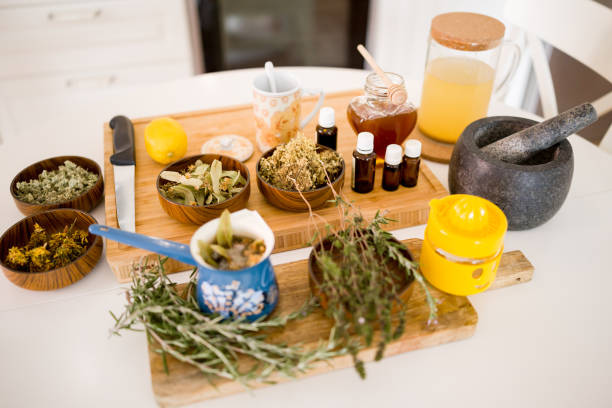
While commercial products offer scientifically-backed formulas, many people also find relief in tried-and-true home remedies. Natural approaches can be effective as supplementary treatments but should not replace medically recommended skincare if you have severe conditions.
Popular Home Remedies:
- DIY Oatmeal Bath: Grind plain oatmeal into a fine powder and add it to lukewarm bathwater. Colloidal oatmeal is renowned for its soothing, anti-inflammatory properties, making it perfect for irritated, red, or itchy winter skin.
- Honey Masks: Raw honey has humectant properties, helping to retain moisture. Apply a thin layer to clean, damp skin, let it sit for 15 minutes, and rinse with lukewarm water.
- Coconut Oil for Dry Patches: A small amount of virgin coconut oil can be applied to areas prone to extreme dryness, such as elbows, knees, or heels.
- Aloe Vera Gel: If you have a plant at home, cut a leaf and apply the gel to red or itchy areas. Aloe vera cools and calms inflamed skin.
Precautions:
- Always do a patch test before using any home remedy, especially if you have sensitive skin.
- Avoid home remedies with high acidity (like undiluted lemon juice) as they can cause irritation or chemical burns when skin is already compromised by winter dryness.
11. Common Mistakes to Avoid in Winter Skincare

Even with the best intentions, a few common pitfalls can sabotage your winter skincare efforts:
- Skipping Sunscreen: UV damage is a year-round risk, and snow reflection can intensify UV exposure.
- Using the Same Products as in Warmer Months: Formulas that work in summer may not provide enough moisture in winter. Switch to richer, more emollient products.
- Over-Exfoliating: A daily scrub or strong acids can exacerbate dryness and redness, especially when the skin barrier is already compromised.
- Long, Hot Showers: Tempting, but detrimental to skin hydration.
- Not Hydrating Internally: Lower thirst cues in winter don’t mean you don’t need water. Dehydration affects skin dryness.
- Ignoring Hands and Feet: Extremities can be especially vulnerable to dryness and cracking. Use heavier creams or ointments on these areas and wear gloves/socks for extra protection.
- Inconsistent Moisturizing Routine: Consistency is key. Applying moisturizer sporadically won’t be as effective as regular, routine applications throughout the day.
12. When to Consult a Dermatologist

While most winter dryness and mild redness can be managed with over-the-counter products and changes in daily habits, certain cases warrant professional advice:
- Chronic, Severe Dryness or Eczema: If your skin is cracked, bleeding, or severely inflamed, it’s time for a medical consultation.
- Persistent Redness or Rosacea: A dermatologist can recommend prescription-strength solutions or medical treatments for chronic redness.
- Allergic Reactions: If you experience rashes, severe itching, or unexplained flare-ups, you may need an allergen test or targeted therapies.
- Infections: Fungal or bacterial infections can resemble extreme dryness in some cases but require medical intervention.
Professional Insight:
Dermatologists can prescribe topical steroids, medicated creams, or oral medications if needed. They can also guide you toward advanced in-office treatments or specialized products that best suit your skin type and concerns.
13. Final Thoughts
Winter can be a challenging time for your skin, but it doesn’t have to be a season of discomfort. By understanding the science behind winter dryness and redness, focusing on gentle yet effective skincare routines, and making informed lifestyle and dietary choices, you can protect and nurture your skin through the coldest months.
Key Takeaways:
- Address the root causes of winter skin woes by managing humidity, temperature changes, and harsh cleansers.
- Layer your skincare products effectively, from a gentle cleanser to a robust moisturizer and specialized serums or oils.
- Include calming ingredients to tackle redness and maintain a healthy skin barrier.
- Stay consistent with sun protection, even on cloudy winter days.
- Look after your overall well-being, maintaining proper hydration, nutrition, and stress management for holistic skin health.
Remember, the best skincare regimen is the one tailored to your specific needs. Test different formulations, keep track of how your skin responds, and don’t hesitate to consult a professional if issues persist. With mindful steps and the right products, you can enjoy a comfortable, glowing complexion all winter long.
FAQ: Winter Skincare Essentials
1. Why does my skin get so dry in winter?
- Cold air has low humidity, pulling moisture from the skin.
- Indoor heating further dries out the air, worsening dehydration.
- Hot showers and harsh winds strip the skin’s natural oils.
2. How can I prevent winter skin dryness?
- Use a hydrating, fragrance-free cleanser.
- Apply a rich, ceramide-based moisturizer.
- Use a humidifier to add moisture to indoor air.
- Avoid hot showers and harsh exfoliants.
- Drink plenty of water and eat moisture-rich foods.
3. What ingredients should I look for in winter skincare products?
- For hydration: Hyaluronic acid, glycerin, ceramides.
- For soothing redness: Niacinamide, aloe vera, colloidal oatmeal.
- To avoid: Alcohol-based, heavily fragranced, or harsh exfoliating products.
4. How often should I exfoliate my skin in winter?
- Limit exfoliation to 1-2 times per week to avoid irritation.
- Use gentle options like lactic acid or enzyme peels.
- Avoid harsh scrubs that can strip moisture.
5. Should I still wear sunscreen in winter?
- Yes, UV rays can still damage the skin in winter.
- Use SPF 30+ daily, even on cloudy days.
- Snow can reflect UV rays, increasing sun exposure risk.
6. How can I reduce winter redness on my face?
- Use calming ingredients like chamomile, niacinamide, and green tea.
- Avoid hot showers and alcohol-based skincare.
- Apply a barrier-repairing moisturizer to protect the skin.
7. What’s the best way to keep lips from getting chapped in winter?
- Use a thick lip balm with shea butter, beeswax, or lanolin.
- Gently exfoliate lips once a week with a sugar scrub.
- Avoid licking lips, as it worsens dryness.
8. Does drinking more water help with dry winter skin?
- Helps overall hydration but won’t completely prevent dryness.
- Must be paired with a good moisturizer and skincare routine.
9. Can I use the same skincare routine in winter as in summer?
- No, winter requires richer, more hydrating products.
- Switch to gentle cleansers and thicker moisturizers.
- Reduce exfoliation and avoid lightweight summer products.
10. What type of moisturizer is best for winter?
- Choose a thicker, cream-based moisturizer with ceramides and hyaluronic acid.
- Look for nourishing oils like jojoba, argan, or shea butter.
- Avoid lightweight lotions that don’t provide enough moisture.

